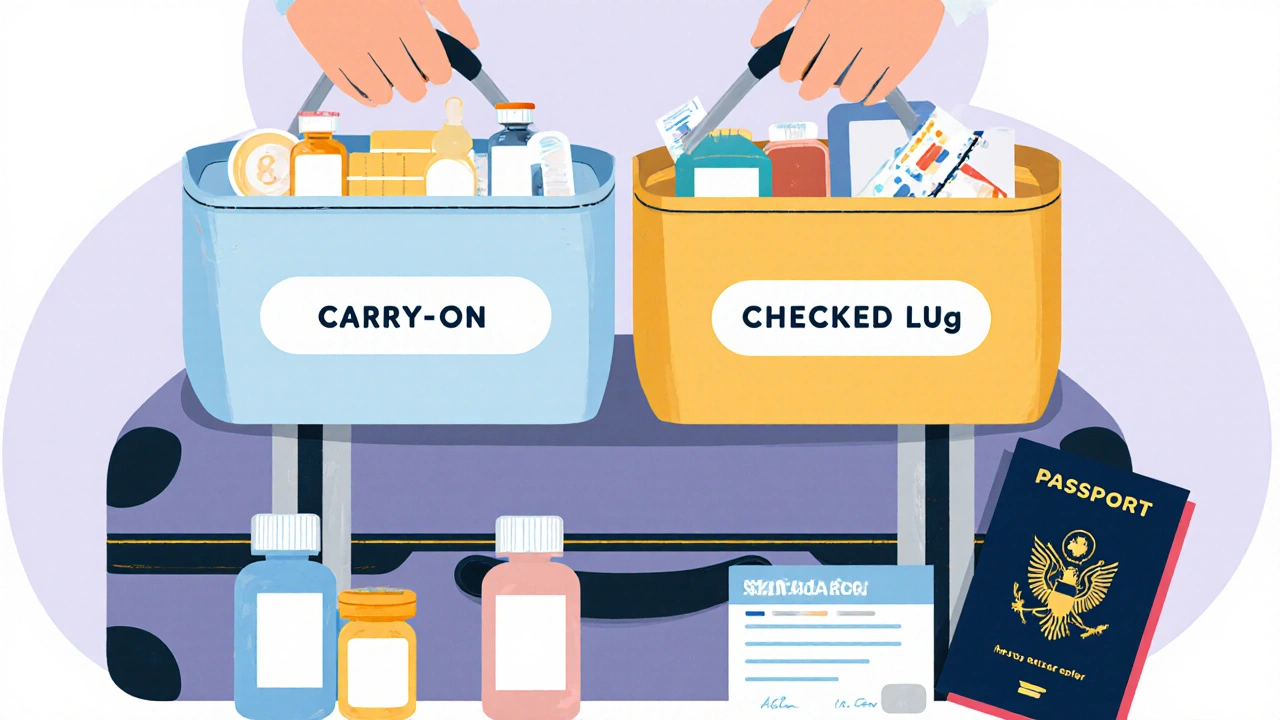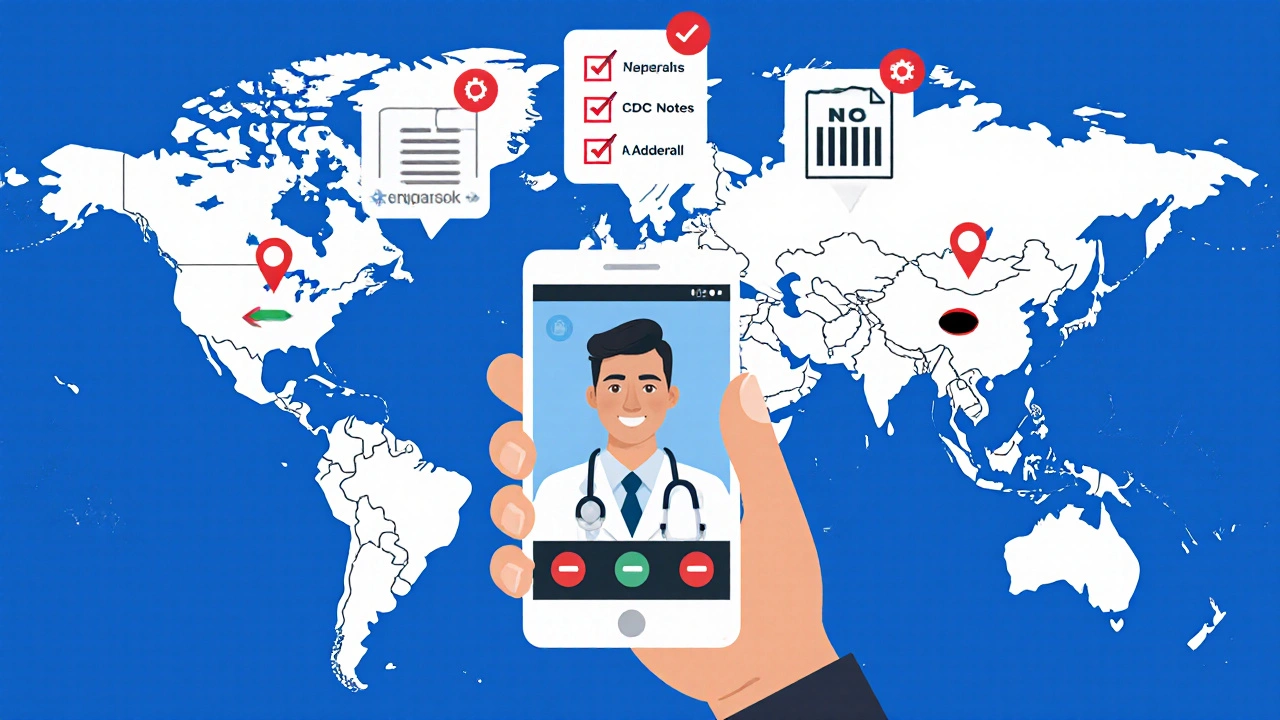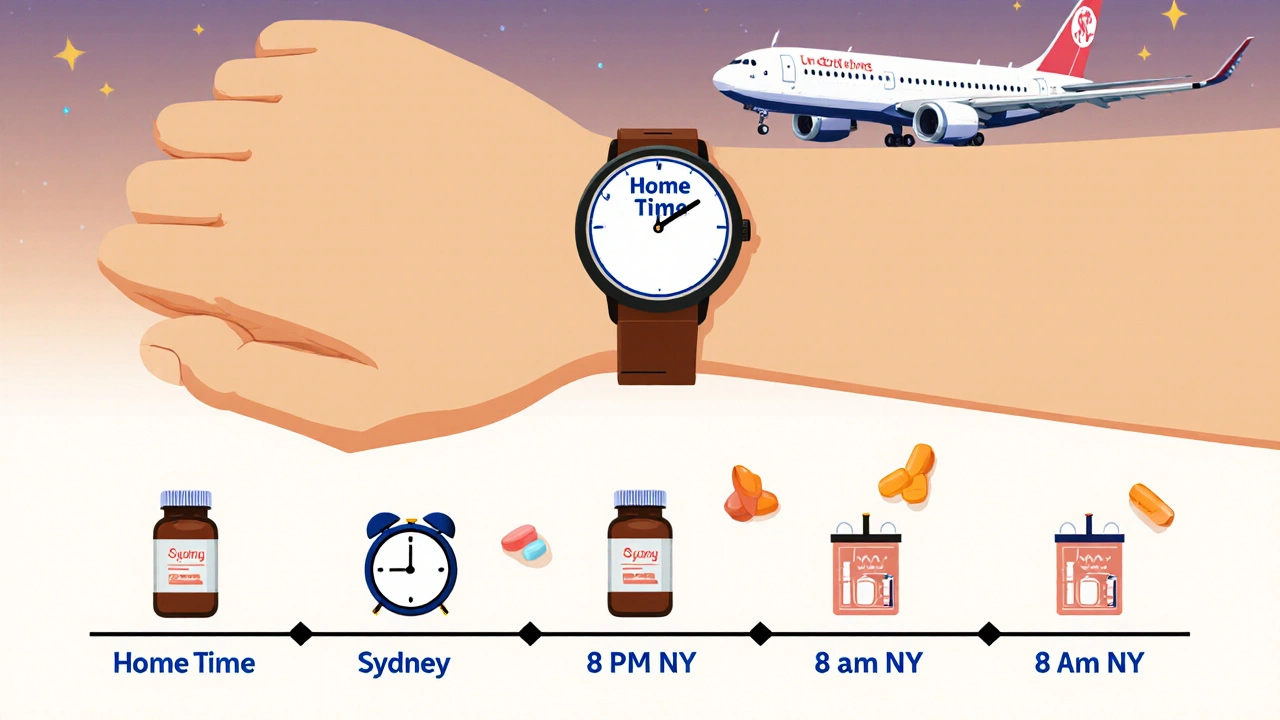
Plan Ahead - Don’t Wait Until You’re Out of Pills
Running out of medication while traveling isn’t just inconvenient - it can be dangerous. If you’re on blood pressure meds, insulin, thyroid pills, or any daily prescription, missing even a few doses can send your health off track. The good news? With the right steps, you can avoid this entirely. Start planning at least 30 days before your trip. That’s not overkill - it’s the minimum. Most pharmacies need 5-7 days to process early refills, and insurance companies may require extra paperwork. If you’re flying overseas, you’ll need even more time to check import rules in your destination country.
Check Your Insurance’s Vacation Override Policy
Most major U.S. insurers - including UnitedHealthcare, Aetna, and Blue Cross Blue Shield - allow what’s called a "vacation override." This means you can get an early refill before your current supply runs out. But here’s the catch: policies vary. UnitedHealthcare lets you refill up to 7 days early. Blue Cross Blue Shield of Michigan allows 14 days. Some plans even let you get a 90-day supply if your doctor approves it. Call your insurer directly. Don’t assume. Ask: "Can I get an early refill for my medications before my trip? What documentation do you need?" Keep a note of the rep’s name and the date you called. If they say no, ask if you can submit a travel itinerary as proof. Many will approve it if you provide one.
Get a 90-Day Supply - If You Can
If your doctor agrees, ask for a 90-day supply instead of the usual 30. This cuts your refill needs in half. Kaiser Permanente’s 2021 study of 45,000 travelers found people who did this reduced their refill trips by 67%. It’s especially helpful if you’re traveling for months. But here’s the catch: not all medications are available in 90-day packs. Controlled substances like opioids, ADHD meds, or certain anxiety drugs are often limited to 30-day supplies due to state laws. In 48 states, you must wait at least 28 days between refills for these drugs. Talk to your doctor about whether a longer supply is safe and allowed for your specific meds.
Know the Rules for Controlled Substances
If you’re taking Schedule II or III drugs - think opioids, stimulants, or benzodiazepines - you’re in a trickier spot. U.S. pharmacies can’t refill these early without a new prescription. Even if your insurance allows it, federal and state rules limit how much you can carry. The DEA and state pharmacy boards enforce the "28-day rule," meaning you can’t get a new refill until 28 days after your last one. Your best bet? Talk to your doctor before you leave. Ask if you can get two prescriptions: one for your trip, and one to be filled at home. Some doctors will write two separate prescriptions with different dates, so you can use the second one after you return. Don’t try to carry extra pills without a written note - it can raise red flags at customs.

Bring Documentation - Especially for International Travel
Outside the U.S., your prescription doesn’t mean much unless you have the right papers. In 78 countries, including Japan, Thailand, and the UAE, you must carry a doctor’s letter and a copy of your original prescription. Some require it to be notarized. Others, like Australia and Canada, accept U.S. prescriptions if they’re in English and match your ID. But in countries like Saudi Arabia or Singapore, even common medications like Adderall or Xanax are banned or heavily restricted. Check the embassy website of every country you’re visiting - including layovers. The CDC’s Travel Health Notices have updated country-specific rules for 2025. Print copies of your prescriptions, your doctor’s letter on letterhead, and your insurance card. Put them in a folder labeled "Medications." Keep it with your passport.
Pack Smart - Two Containers, Two Places
Never pack all your meds in one bag. If your suitcase gets lost, you’re stuck. The American Pharmacists Association recommends a dual-container strategy: split your pills between your carry-on and checked luggage. Keep your daily dose in your carry-on, in the original bottles with labels intact. TSA allows medically necessary liquids over 3.4 ounces if you declare them at security - and 98% of U.S. airports follow this rule. For the rest, pack extra pills in your checked bag. Don’t put them in a pill organizer unless it’s clearly labeled. Customs agents may ask to see the original bottles. Also, bring a printed list of your medications: generic name, brand name, dosage, and why you take them. If you’re asked, you’ll know exactly what to say.
Time Zones Are Tricky - Stick to Your Home Schedule First
Changing time zones messes with your rhythm. If you take medication at 8 a.m. your time, don’t suddenly switch to 8 a.m. local time the moment you land. The American Academy of Sleep Medicine says to stay on your home schedule for the first 24-48 hours. After that, slowly shift your doses over a few days. For example, if you’re flying from Sydney to New York (16-hour time difference), keep taking your pill at 8 a.m. Sydney time for two days. Then move it to 8 p.m. New York time. This avoids missed doses and reduces side effects. Never skip a dose just because you’re confused about the time. Set phone alarms for each dose - one for home time, one for local time - until you’re adjusted.

What If You Lose Your Medication?
It happens. You leave your bag on a train. Your suitcase doesn’t show up. Don’t panic. In the U.S., most national pharmacy chains - CVS, Walgreens, Rite Aid - can give you a 3-day emergency supply if you have a refill left on file. You’ll need your insurance card and ID. Some pharmacists will even call your doctor for a one-time renewal. CVS MinuteClinic, for example, lets you get one emergency refill per year. If you’re overseas, your best option is to find a local pharmacy and show your doctor’s letter and original prescription. In many countries, they’ll fill it if the medication is legal there. If you’re stuck, contact your country’s embassy. They often have lists of local doctors and pharmacies that work with travelers. Telehealth services like Teladoc also helped over 1.2 million people get emergency refills in 2022. They can call in a prescription to a local pharmacy if your doctor approves it.
Don’t Forget: Your Medications Are Part of Your Travel Insurance
If you’re buying travel insurance, make sure it covers medical emergencies related to your medications. Some policies won’t pay if you ran out because you didn’t refill early. Others cover emergency refill costs abroad. Read the fine print. If you’re on a long-term prescription, consider a travel insurance plan that includes medication replacement. It’s not expensive - often under $50 for a two-week trip. And if something goes wrong, it could save you hundreds - or more.
Final Tip: Test Your Plan Before You Go
A week before you leave, do a dry run. Pack your meds like you will on the trip. Carry them in your bag. Go through airport security with them. Check your phone alarms. Call your pharmacy and ask if your refill is ready. Confirm your insurance override is approved. This isn’t just preparation - it’s peace of mind. You’ve done everything right. Now you can focus on the trip, not the pills.
Can I get my medication refilled early if I’m traveling for more than a month?
Yes, most U.S. insurance plans allow early refills for extended trips. You’ll need to request a "vacation override" and often provide proof of travel dates. Many insurers will approve a 90-day supply if your doctor supports it. Always call your insurer ahead of time - policies vary.
Are there countries where my prescription won’t be accepted?
Yes. Countries like Japan, Thailand, the UAE, and Singapore have strict rules on certain medications. ADHD drugs, anxiety meds, and painkillers are often banned or require special permits. Always check the embassy website of every country you’re visiting - even for layovers. The CDC’s Travel Health Notices list restricted drugs by country for 2025.
Can I carry liquid medications like insulin or nebulizer solutions on a plane?
Yes. TSA allows medically necessary liquids over 3.4 ounces if declared at security. Keep them in their original bottles with labels. You don’t need to put them in the quart-sized bag. Bring a doctor’s note just in case, though it’s rarely required at U.S. airports.
What if my pharmacy runs out of my medication before my trip?
Call other pharmacies in your area. Chain pharmacies like CVS and Walgreens often share inventory. If none have it, ask your doctor for a new prescription to be sent to a different pharmacy. Some clinics offer same-day refills for urgent cases. Don’t wait until the last minute - start checking 10-14 days before you leave.
Can I use telehealth to get a refill while abroad?
Sometimes. Services like Teladoc or Amwell can connect you with a U.S. doctor who can prescribe a refill if you have an existing relationship. But they can’t prescribe controlled substances across borders. They also can’t guarantee the pharmacy abroad will fill it. Use telehealth as a backup - not your main plan.

Post A Comment